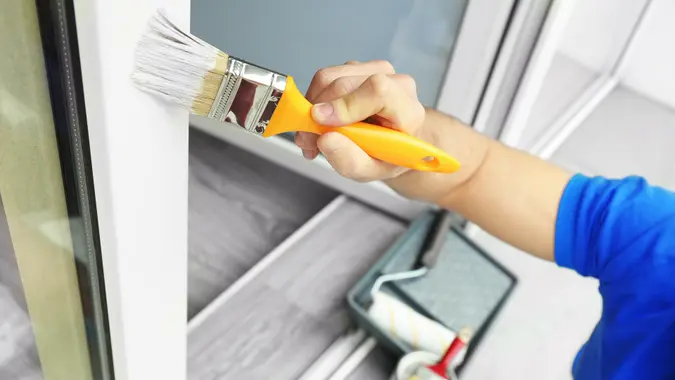Want To Buy a Car? Ramit Sethi Says To Do This First

Commitment to Our Readers
GOBankingRates' editorial team is committed to bringing you unbiased reviews and information. We use data-driven methodologies to evaluate financial products and services - our reviews and ratings are not influenced by advertisers. You can read more about our editorial guidelines and our products and services review methodology.

20 Years
Helping You Live Richer

Reviewed
by Experts

Trusted by
Millions of Readers
Most Americans allocate a substantial portion of their paychecks to car payments. Experian reported that the average monthly auto loan payment is $745 for new cars and $521 for used vehicles.
Despite those costly figures, some personal finance experts say you should expect to pay even more. Ramit Sethi, New York Times bestselling author and host of the YouTube channel “I Will Teach You To Be Rich,” said even if you’re able to afford the monthly installments for a car loan, it still might be outside your budget. Why? Because there are some additional things you’ll need to pay for. So he said you should take those costs into account first.
Insurance
Almost all U.S. states require you to carry car insurance. Even if you don’t have to purchase it, it’s still a good idea to be protected in case of an accident. The amount people pay per month can vary by state, with low-cost states averaging $79.83, medium-cost states averaging $105.36 and high-cost states averaging $157.27.
Gas
Gas prices fluctuate, making it difficult to plan for. In 2023, the average amount each household spent on gas per month was $204, but this can vary based on the state you live in and how much you drive.
Maintanence
A Consumer Affairs report found that, on average, people pay about $900 on car repairs each year. That breaks down to an extra $75 a month on top of your auto loan payment and other costs.
Apart from dealing with unexpected breakdowns, you’ll need to have regular check-ups, oil changes, tire rotations and brake pad replacements to keep your car running properly, all of which you’ll have to add into your monthly costs. The amount of maintenance you need will depend on various factors, such as the make and model of your vehicle, as well as how often you use it.
Registration
After buying your car, you’ll need to pay to have it registered. The cost will depend on the state and city you live in, the type of vehicle and its weight.
Depreciation
In most cases, you invest in something, such as stocks or real estate, in hopes that its value will increase over time. But most cars depreciate, or lose value, the older they get.
In fact, a new car loses nearly 30% of its value in the first two years and then drops an additional 8% to 12% annually. If you’re not careful, you can end up with an upside-down car loan. This happens when your car depreciates so much that you owe more on your auto loan than your car is worth. For example, if you finance your car for $100,000 but it depreciates quickly, you may have $70,000 of auto loan debt left to pay back on a car only worth $65,000. If you trade in your car, you will still owe $5,000 and no longer have a vehicle to get you around. This won’t affect your monthly payment, but it can severely affect your financial health.
What You Should Do
Considering your monthly payment alone is deceiving and makes many people think they can afford a car when they won’t be able to handle all of the hidden fees. Sethi advised anyone interested in purchasing a car to take their monthly payment and double it to better prepare for all the expenses. In fact, Sethi triples his monthly payment. When you take out an auto loan, you’re paying back the principal amount you borrowed with interest. In some cases, you’ll pay for add-on products like credit insurance or an extended warranty.
More From GOBankingRates
 Written by
Written by  Edited by
Edited by 

























